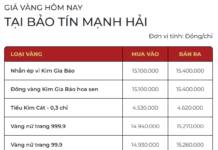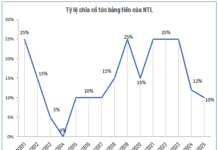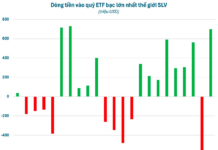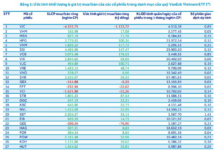A Look at Hanoi’s Most Expensive Roads
Take a closer look at Hanoi’s most expensive roads, with construction costs that will blow your mind.

The Hoàng Cầu – Voi Phục road is one of the most expensive projects in Hanoi, with an investment of over 7.2 trillion VND. This 2.2km-long road, with a 50m-wide cross-section, runs parallel to Đê La Thành road.

On average, each meter of the Hoàng Cầu – Voi Phục road costs over 3.5 billion VND, three times more than the Kim Liên – Ô Chợ Dừa road (over 1.1 billion VND/m) and twice as much as the Ô Chợ Dừa – Hoàng Cầu road (1.4 billion VND/m).

The Trần Khát Chân road, from Ô Đống Mác to Nguyễn Khoái, is another expensive project in Hanoi. With a length of 570m and a total investment of 1.139 trillion VND, each meter of this road costs nearly 2 billion VND.

This road is part of Hanoi’s inner ring road system and has helped reduce traffic congestion and improve the city’s landscape.

The Trần Khát Chân road has a total width of 50m, with 3 lanes on each side.
The road extends from the Lò Đúc – Trần Khát Chân – Kim Ngưu intersection to the Nguyễn Khoái dyke.

A panoramic view of the Trần Khát Chân road (from Ô Đống Mác to Nguyễn Khoái). Located in a densely populated area, this new road has effectively reduced traffic congestion and enhanced Hanoi’s beauty.

In February 2008, the 550m-long Kim Liên – Xã Đàn road, part of the inner ring road, was opened to traffic. With a total investment of 773 billion VND, the average cost per meter was 1.41 billion VND.

The Kim Liên – Xã Đàn road has a total width of 45m, with 4 lanes on each side.
In 2013, the 547m-long Ô Chợ Dừa – Hoàng Cầu (Xã Đàn) road was inaugurated with a cost of 800 billion VND, two-thirds of which was spent on compensation and site clearance. The average cost per meter was 1.4 billion VND.

The Ô Chợ Dừa – Hoàng Cầu road has a width of over 80m, with 4 lanes on each side.

The Trường Chinh road, from Ngã Tư Sở to Ngã Tư Vọng, is part of Hanoi’s ring road 2.
The 2km-long road project started in October 2013 with a total investment of 2.56 trillion VND (approximately 1.5 billion VND/m).

Affectionately known as the “gently curved road,” Trường Chinh road features 5 lanes in each direction and an elevated road exclusively for cars. To expand this 2km-long road, Hanoi had to acquire over 116,000 square meters of land, affecting 618 households and 34 agencies in Đống Đa and Thanh Xuân districts.

The completion of the Trường Chinh road has significantly reduced travel time along this important route.

The Nguyễn Văn Huyên road in Cầu Giấy district, completed in 2015, had a total investment of over 969 billion VND (1.94 billion VND/m). Compensation for site clearance accounted for 680 billion VND, while construction cost over 79 billion VND.

The Nguyễn Văn Huyên road starts at the intersection of Nguyễn Văn Huyên and Nguyễn Khánh Toàn and ends at the intersection with Cầu Giấy road.

With 4 lanes on each side, an 8m-wide median strip, and a massive 8m-wide sidewalk, the Nguyễn Văn Huyên road is a key project in Cầu Giấy district, helping to reduce traffic congestion on the Cầu Giấy – Xuân Thủy route.

Hanoi’s Department of Transport has proposed 11 transport infrastructure projects, including the expansion of the ring road 2 section from Ngã Tư Sở to Cầu Giấy.

The 3.8km-long Láng road, from Ngã Tư Sở to Cầu Giấy, will be expanded at ground level and elevated, connecting to the existing Vĩnh Tuy – Ngã Tư Sở elevated road. With a current width of 10.5m per direction, the expanded Láng road will be twice as wide at 53.5m. The total investment for the ground-level expansion is estimated at 17.241 trillion VND, while the elevated section is expected to cost over 3.8 trillion VND, bringing the cost per meter to nearly 4.54 billion VND. If approved, the Láng road will become Hanoi’s most expensive road.






































